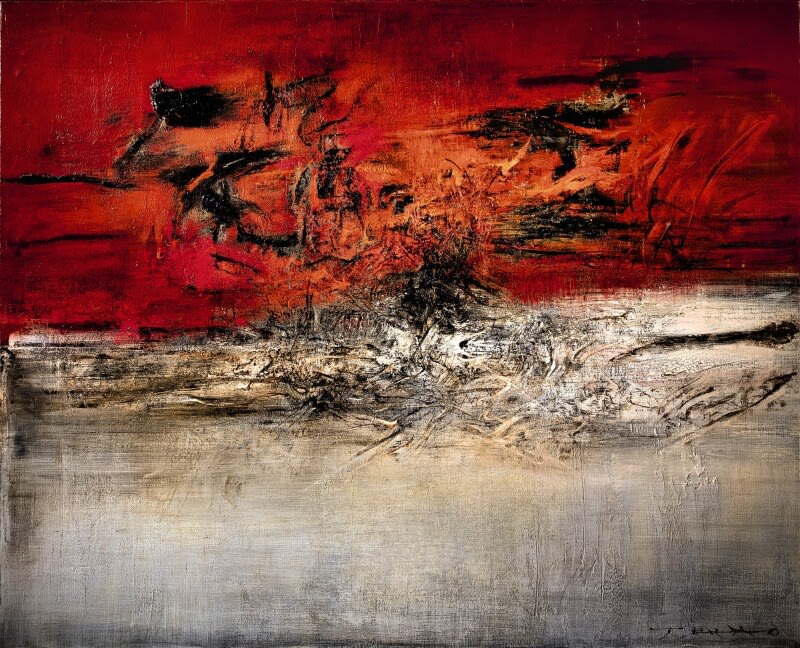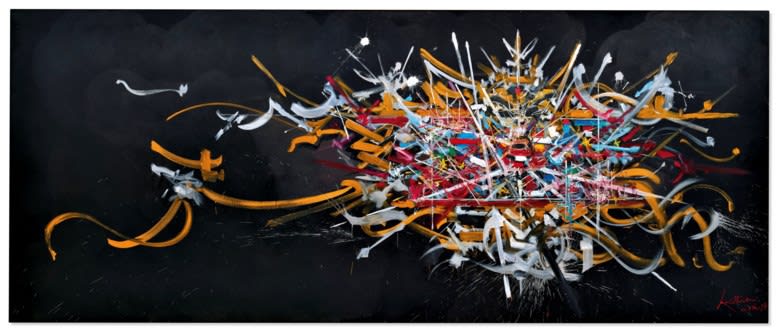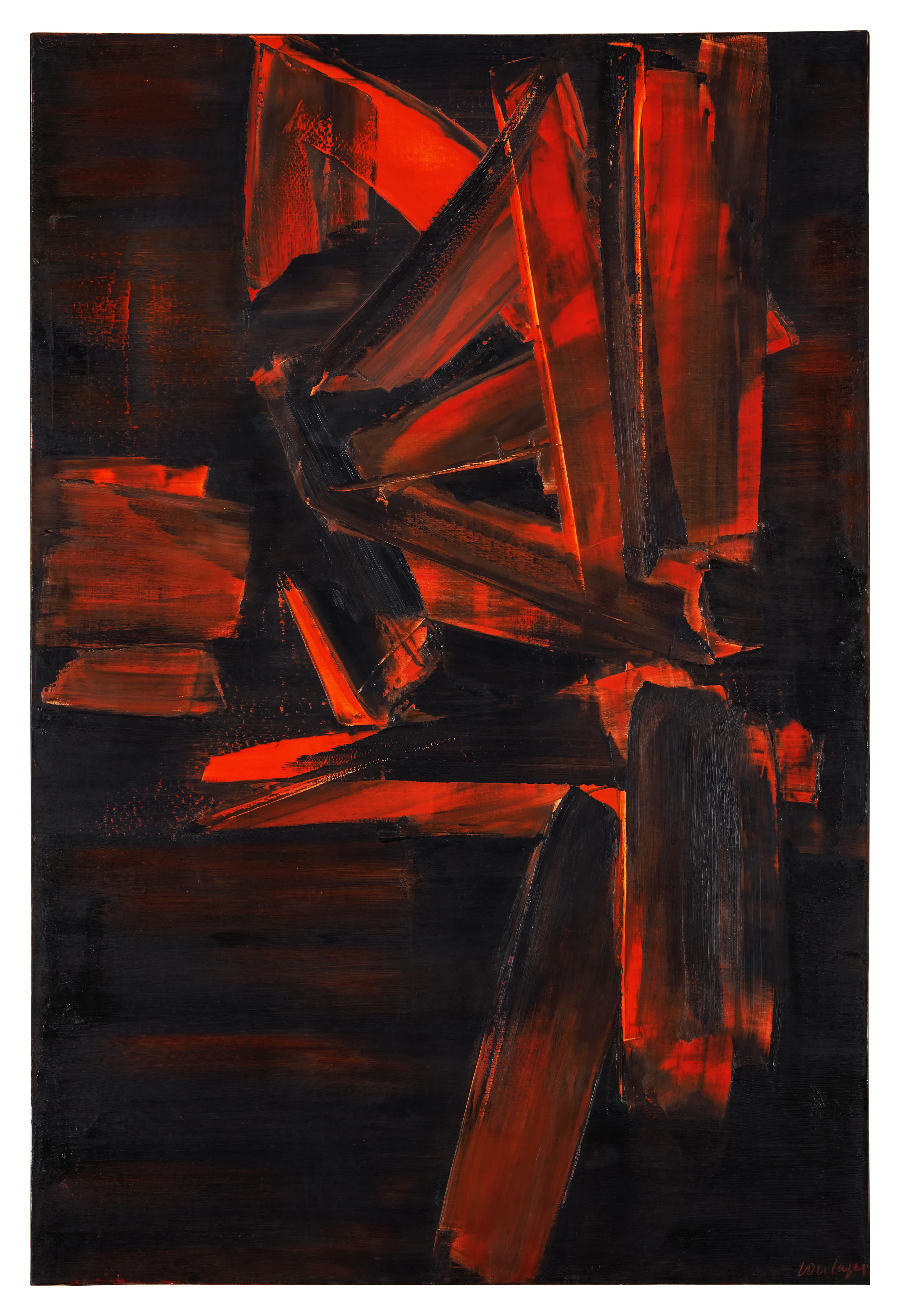-

-
What the Post-war School of Paris Tells Us about the World We Live in Then and Now
Christy Cheung
Chief editor and writer of Collect
- What is post-war modern art?
- A closer look at the New School of Paris through the past and present lens
- Market outlook
The end of the second world war ushered in a new era of modernity characterised by lingering trauma and ideological oppositions on one hand, and innovations and global integration on the other. The atomic bombs catastrophically pressed the reset button of the world order, bringing an end to the dominance of European colonial powers that not only led the colonised to rediscover their national identities but also created a new consciousness in the West, with America emerging as the new superpower, the imminence of the Cold War, and also Europe struggling to recuperate from its war-torn state. To say that the post-war period was complex is an understatement. However, in the field of art, these rigorous changes resulted in two decades of incredible cultural productions around the world; artists tirelessly experimented and broke artistic traditions in all fronts to respond to the horror of the war as well as to make sense of and search for hope in the new world.

Zao Wouki, 13.02.62, 1962, Oil on canvas, 129.5 x 161.5cm
Sold for HK$162,926,000 on 18 April 2021 at Sotheby’s Hong Kong, Beyond Legends: Modern Art Evening Sale
Distinguished from the utopian modernism from the early 20th century spearheaded by such European avant gardes as Picasso, Matisse and Mondrian, the pace of post-war modern art is mostly considered to be set by American art, particularly Abstract Expressionism of which Jackson Pollock, known for his then jaw-dropping drip painting, was the poster child. However, art development in such an unprecedented time that is so difficult for everyone to comprehend even to this date was by no means linear. In the past decades, both the art market and academia have been drawing attention to the multiple trajectories of the post-war art scene to challenge this canonical narrative; from the new School of Paris, the St. Ives school and Punto Art Movement in Europe to the Gutai Movement in Japan to neo-concrete art in Latin America, the art world has been striving to put together the missing pieces of the enormous post-war puzzle. This article takes a closer look at the New School of Paris, a group of artists who not only have recently come under the spotlight in the art scene but also have much to tell us about the troubled world we live in.
A Closer Look at the New School of Paris
As France was attempting to reinvigorate the country’s cultural dominance after the war, many foreign artists and returning French artists arrived in Paris to catch the former aura of the City of Lights. Coming from a diversity of backgrounds and cultures, these artists, such as Georges Mathieu, Hans Hartung, Pierre Soulages, Zao Wouki and Chu Tehchun to name a few, aspired to establish an aesthetic identity that transcends political, ideological and cultural boundaries. Collectively known as the New School of Paris as coined by their major supporter and art critic Charles Etienne, these artists experimented with various styles in abstraction that have come to be defined by terms like tachisme and lyrical abstraction. Despite the plurality of their approaches, the works of these artists reflect their affinity in their calligraphic gestures, heightened materiality, study of light as well as the interplay of chance and control. They broke with geometry as it symbolised the rationalistic ideals of the Western old world and advocated intercultural influences, straddling traditions from the East and West and exploring universalism on both artistic and spiritual level.

Hsiao Chin, Flying Over The Eternal Garden-15, 1998, Acrylic on canvas, 110 x 250cm
Sold for HK$2,394,000 on 9 October 2021 at Sotheby's Hong Kong Autumn Auction, Modern Art Evening Sale
Although often obscured by the New York School and their activities were mostly confined in Europe, this group of artists contributed to the cultural reconstruction of the continent through their intense creativity, risk taking spirit and capabilities to reconcile differences and contradictions. Moreover, the post-war Paris was still a vital cultural hub where artists from around the world, including Jackson Pollock, Mark Rothko and Willem de Kooning from the New York School, continued to visit and influenced each other. Unlike Abstract Expressionism which was often used as a banner to display the supremacy, technical prowess and cultural and economic dominance of America, in a way reinforcing division and hierarchy in the already much divided post-war era, the New School of Paris was searching for a universal visual language that could speak to humanity as a whole.
The Contemporary Lens
These past few years have seen the reset button of the world order being approached again. Besides the incredibly stubborn Covid-19 pandemic which has caused millions of deaths and sent the world economy to a screeching halt, the US-China trade war, the increasing number of natural disasters caused by climate change, the Russian invasion of Ukraine, as well as many other violence and arm races around the world, are all threatening to turn our lives upside down. Although the amount of causalities and destruction we are witnessing now is not comparable to that of the second world war, we can certainly relate to the fear, unease and devastation of the time.
Looking back at the history of the New School of Paris, we see a group of artists who turned oppositions into inspirations, trauma and pessimism into creativity and beauty. We are now living in the tension between hyper connection and bitter division; the works of these artists are reminders that differences are also sources of productive and unifying energy, and it is up to us to compose a vibrant and hopeful future.

Georges Mathieu, Souvenir de la maison d’Autriche, 1978, Oil on canvas, 250 x 600cm
Sold for HK$17,290,000 on 2 December 2020 at Christie’s 20th Century: Hong Kong to New York
Market Outlook
Recent years have seen an upward movement in price of the New School of Paris artists thanks to the consistent effort of art dealers and cultural institutions to promote their historical significance outside of Europe and the general revival of the post-war period in the art market. Reports also suggest an increase of more educated collectors who weigh on historical value and prefer long term investments. Particularly in Asia, the market consensus has pointed to not only the exceptional resilience of the market amidst geopolitical tension and the pandemics, but also its increased maturity due to collectors’ more sophisticated understanding of intercultural influences and their pursuit of a more internationalised collection.

Pierre Soulages, Peinture 195 x 130 cm, 4 août 1961, 1961, Oil on canvas, 195 x 130cm
Sold for US$20,141,700 on 16 November 2021 at Sotheby's New York Modern Evening Auction
Having said that, many artists from the art movement are still considered undervalued. Notably, compared to their Chinese counterparts like Zao Wouki and Chu Tehchun who also spent their mature years in Paris, Western artists such as Georges Mathieu and Pierre Soulages caught the attention of the international market much later. As explained by Felix Kwok, Director and Head of Modern Art of Sotheby's Asia, this is partly due to the fact that prices of the former are driven by the robust market of Asia whose focus has been on Asian abstraction in the international art scene. While the presence of these European artists is unmistakable in the academic field and major museum collections, their prices have yet reflected their significant contributions to art history. We have seen Mathieu breaking a few auction records in recent seasons, which signifies that the market is beginning to re-evaluate this master of abstraction, and a strong performance is expected in the near future. Felix also stressed that “post-war art is the most spectacular chapter in the history of art, in which abstraction became the most important artistic language across the globe … and Mathieu is the icon of that era, not only did he invent the Lyrical Abstraction, but he also introduced American abstraction to Europe and greatly inspired the Gutai group in Japan.” The auction house is anticipating great response from the two masterpieces of Mathieu on offer in the prestigious Modern Art Evening Sales this season.
